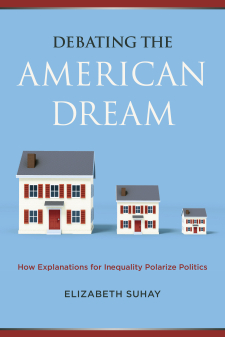Representational Inequality and Campaign Finance Regulation in the U.S. States
Elected officials are expected to respond to their constituents’ preferences when shaping public policy, but when policy preferences diverge, whose preferences actually prevail? Democratic principles presume that majorities hold sway, but political scientist Martin Gilens’ recent research (which will be co-published this summer by RSF and Princeton University Press in a volume titled Affluence and Influence) provides conclusive evidence that national policymakers are much more responsive to the policy preferences of the affluent than the middle class or the poor. Evidently, our national political system is skewed toward a form of representational inequality that has the potential to exclude the interests of significant segments of the population.
Gilens now proposes to extend his prior work by exploring the effectiveness of campaign finance regulations as a possible remedy to representational inequality. His plan is to exploit variation in the incidence and timing of campaign finance laws across the 50 states to see whether the influence of the wealthy on public policy declines after campaign finance reforms are passed. Research by others has previously shown that state campaign finance regulations – including spending limits, contribution limits, and public financing – can be effective in increasing electoral competition and reducing candidates’ reliance on affluent campaign donors. Gilens’ project is designed to test the hypothesis that campaign financing reforms also have significant legislative effects by making legislators’ policy choices more responsive to the preferences and interests of the broader middle-class.
Gilens will assess responsiveness to public preferences by comparing the public’s policy preferences with actual state policy across a wide range of substantive issues. The dependent variable in the analyses will be the presence or absence of the relevant policies, and representational inequality will be captured by the associations of policy outcomes with the preferences of respondents at different income levels. The role of campaign finance regulations in moderating this relationship will be analyzed by examining the interaction of the campaign finance reform indicators with the measures of representational inequality. Gilens predicts that an association between policy outcomes and the preferences of the affluent will be significantly weakened after campaign finance reform.





